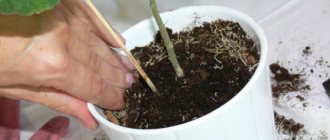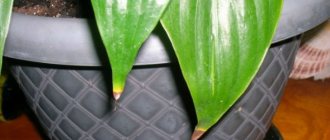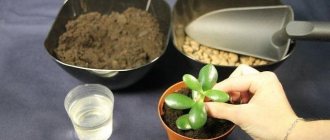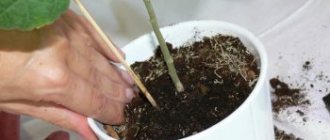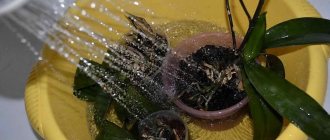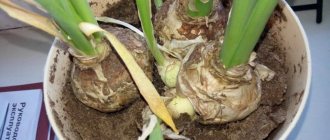White plaque in flower pots can look different and appear there for a variety of reasons. In order to know how to get rid of plaque and whether it is necessary to do it at all, first let’s figure out what exactly caused it.
If we combine all the reasons together, we can say that the white coating appeared in the pots as a result of improper care of the plants. Depending on what exactly was done wrong, the methods of dealing with the consequences in the form of white plaque will also differ.
Sometimes such plaque can be not only white, but yellowish and even brown.
After watering there is a white coating on the ground in the garden, what to do?
Mold and white coating in pots of indoor plants.
How to get rid of it? When caring for indoor plants, we often notice that mold or white plaque appears on the surface of the soil . Why mold appears in pots of indoor flowers and how to get rid of it is described in this article.
The appearance of mold on the ground is a threat to the health of an indoor flower in a pot, since mold can spread to the stem and cause rotting of the roots.
On the surface of the soil there is mainly white mold, similar to white fluff. This is a type of mold that grows in the top layer of soil. This fungus is widespread and often appears in flower pots under favorable conditions.
White coating or efflorescence are protruding crystals of soluble salts ; they appear on the surface of the earth, on the walls of the pot, on the base of the plant, and can be white, yellow or brown. The appearance of a white coating signals a deterioration in the quality of the soil in the pot, since the roots are in unfavorable conditions and can rot.
Why does mold or white residue appear in flower pots?
First of all, mold in a pot appears due to mistakes in caring for a houseplant:
– Mold is caused by overwatering . Many gardeners are afraid to dry out their indoor flowers and water them often and abundantly. In constantly damp soil, mold grows quickly. Water indoor flowers after checking the soil; its top layer should dry 2-3 cm before the next watering, then there will be no mold.
– Another mistake is watering a little, but often , so that only the top layer of soil in the pot gets wet. Consequently, the roots at depth do not get moisture, the plant looks dried out, and mold grows on the surface of the earth and efflorescence appears.
Properly watering a houseplant is necessary with small portions of water several times at intervals of 5 minutes until water appears from the drainage holes, which means the lump of earth is completely saturated with moisture and you can take a long break before the next watering.
– Mold and white coating appear due to stagnation of moisture in the soil , this happens if there are no drainage holes in the bottom of the pot, there is no drainage layer to drain excess water in the soil. Any leaked water into the tray must be drained after watering.
– A white coating appears on the surface of the earth when watering with hard tap water ; salts, along with watering, enter the soil, and then, when moisture evaporates from the surface, they are converted into crystals.
– Mold and white coating provoke the application of excessive doses of fertilizers , undeveloped mineral substances by the plant appear on the surface of the soil, and an excess amount of nutrients leads to the violent growth of mold.
– Mold and white coating appear if the plant is planted in a pot that is too large ; its roots cannot absorb the entire volume of soil and draw moisture and nutrients from it. Over time, unused soil becomes salty, sour and moldy.
– If you bought land and it is already moldy, then you cannot sow seeds or plant seedlings in it, or replant young plants , since mold can spread to fragile roots and stems, and as a result, the seedlings or seedlings will die.
How to get rid of mold and white deposits in flower pots?
1. When the soil in pots with indoor plants becomes covered with white fluff and smells rotten, you should change the watering schedule and water the flowers only after the top layer of soil has dried.
2. Loosen the surface of the soil in pots to break up the dense crust and allow air to pass into the deep layers of soil to the roots.
3. If there is a lot of mold, then you can get rid of it by removing the entire top layer of soil in the pot and filling it with new soil.
4. It is recommended to add bactericidal components to the soil for indoor flowers - pieces of charcoal and sphagrum moss have such properties.
5. The biological preparation “Fiosporin” will help against mold, which contains beneficial bacteria that prevent the development of fungi and rot. The drug in powder form must be diluted according to the instructions, left for a couple of hours and watered indoor flowers.
6. You can get rid of mold in pots using citric acid . Dilute half a teaspoon of citric acid in a glass of water and moisten the top layer of soil in the pot; an acidic environment is not suitable for the development of fungi and mold disappears. However, only those plants that like acidic soil can be watered with citric acid.
7. If mold and white coating cover the entire surface of the earth, then it is recommended to replant the plants with a complete replacement of the substrate . The soil for planting indoor plants must be disinfected by steaming in the oven.
